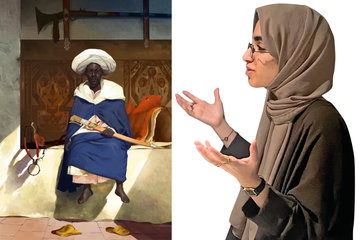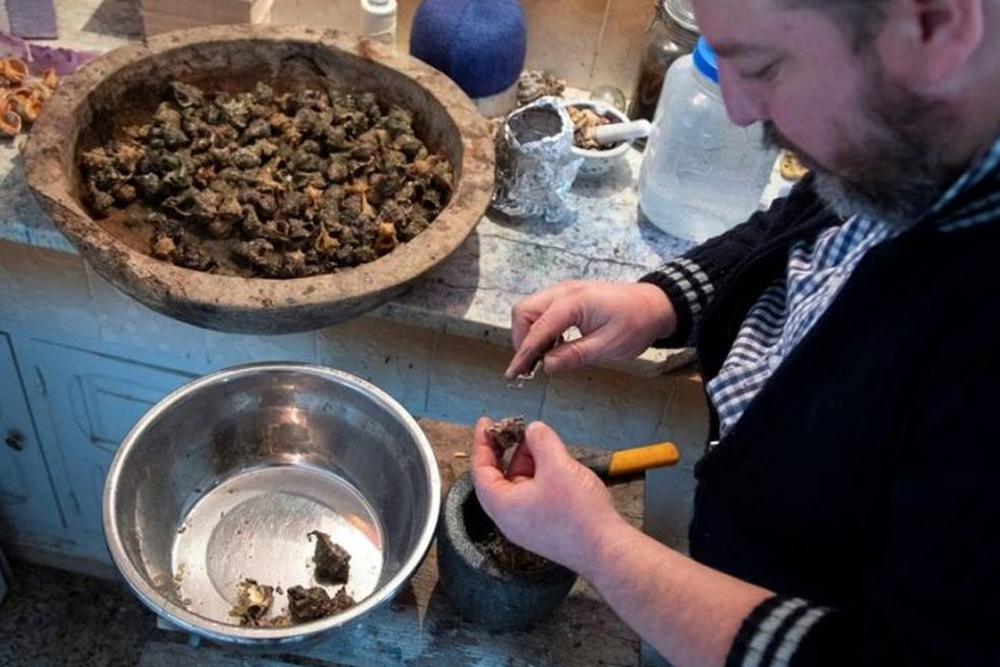
Mohamed Ghassen Nouira, a history-obsessed Tunisian, revives in his garden an antiquated craft that was once considered a sign of riches in the ancient world: making purple dye from sea snail shells.
A while back, while taking a leisurely walk along the beach in Carthage, a suburb of Tunis in northern Tunisia, Nouira stumbled upon a murex shell. This discovery evoked memories of his history classes and sparked a desire to recreate the ancient dye.
The historical importance of Tyrian purple cannot be overstated. This color, also known as Tyrian purple, was highly coveted in ancient times and reserved exclusively for the aristocracy. The Phoenicians, who originated in what is now Lebanon, had a thriving trade in Tyrian purple, which was essential to the development of their trading empire. They did this by establishing colonies all across the Mediterranean, notably Carthage, which later became an autonomous empire and ruled the western Mediterranean for centuries.
Today, Carthage exists as a suburb of Tunis, where the ancient Punic civilization's remains may still be seen along the city's hillsides, and the ancient Punic harbor still has its original shape after a thousand years.
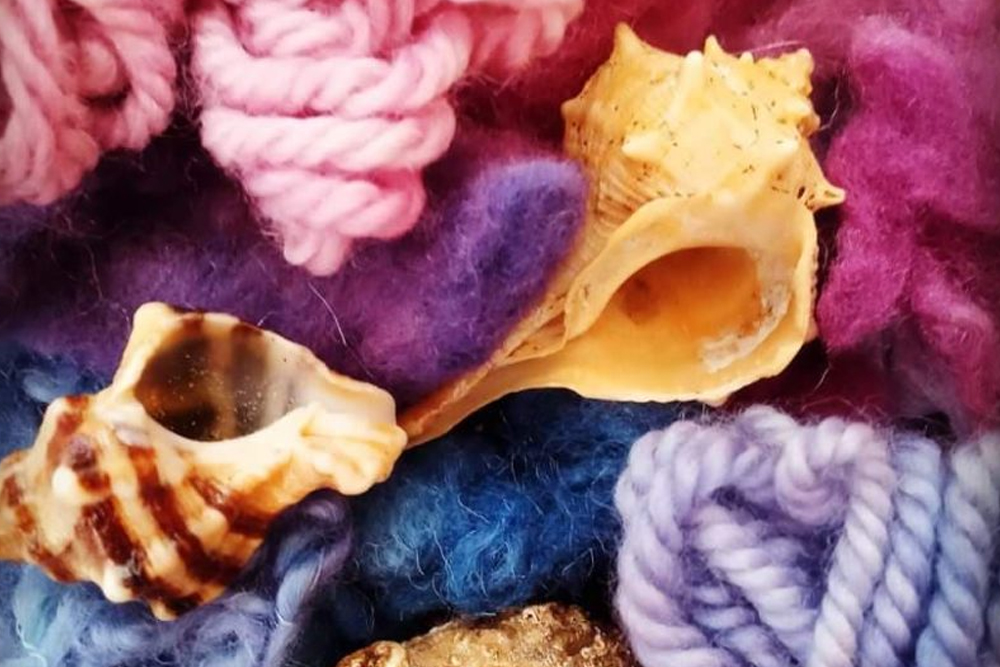
Murex shells from that time, when Carthage and its trade routes changed the Mediterranean region, are scattered over its shores. The method for obtaining Tyrian purple from murex shells was lost throughout the years, but Nouira set out on a mission to revive the lost art.
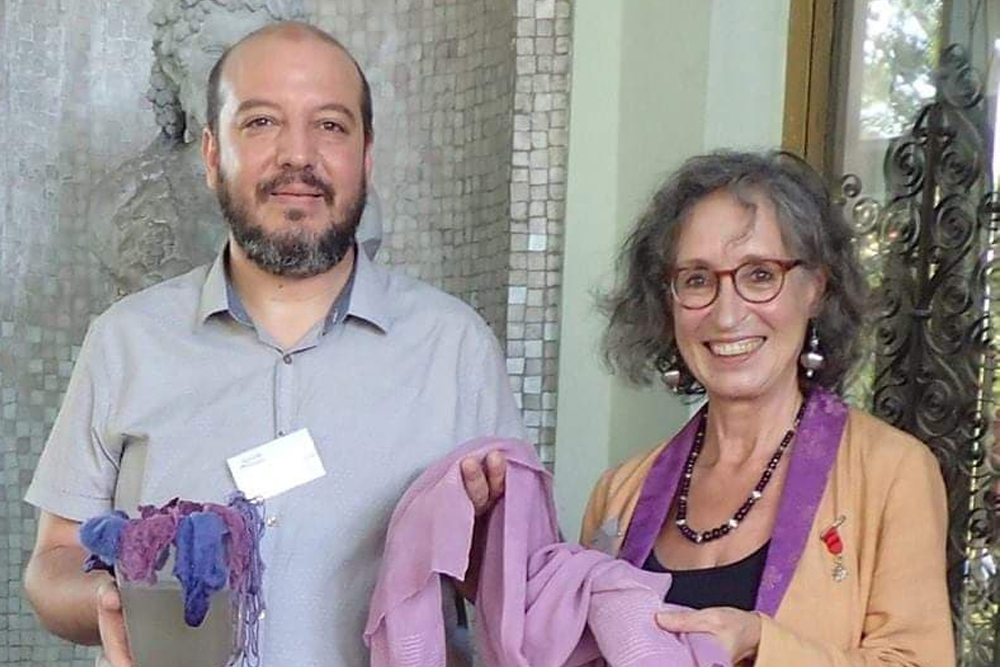
Nouira dedicated 14 years of his life to unraveling the production process of Tyrian purple. At first faced with doubt and criticism for his unconventional hobby, he remained steadfast in his pursuit. His detractors eventually turned into admirers when observable results started to surface, giving him encouragement that strengthened his resolve.
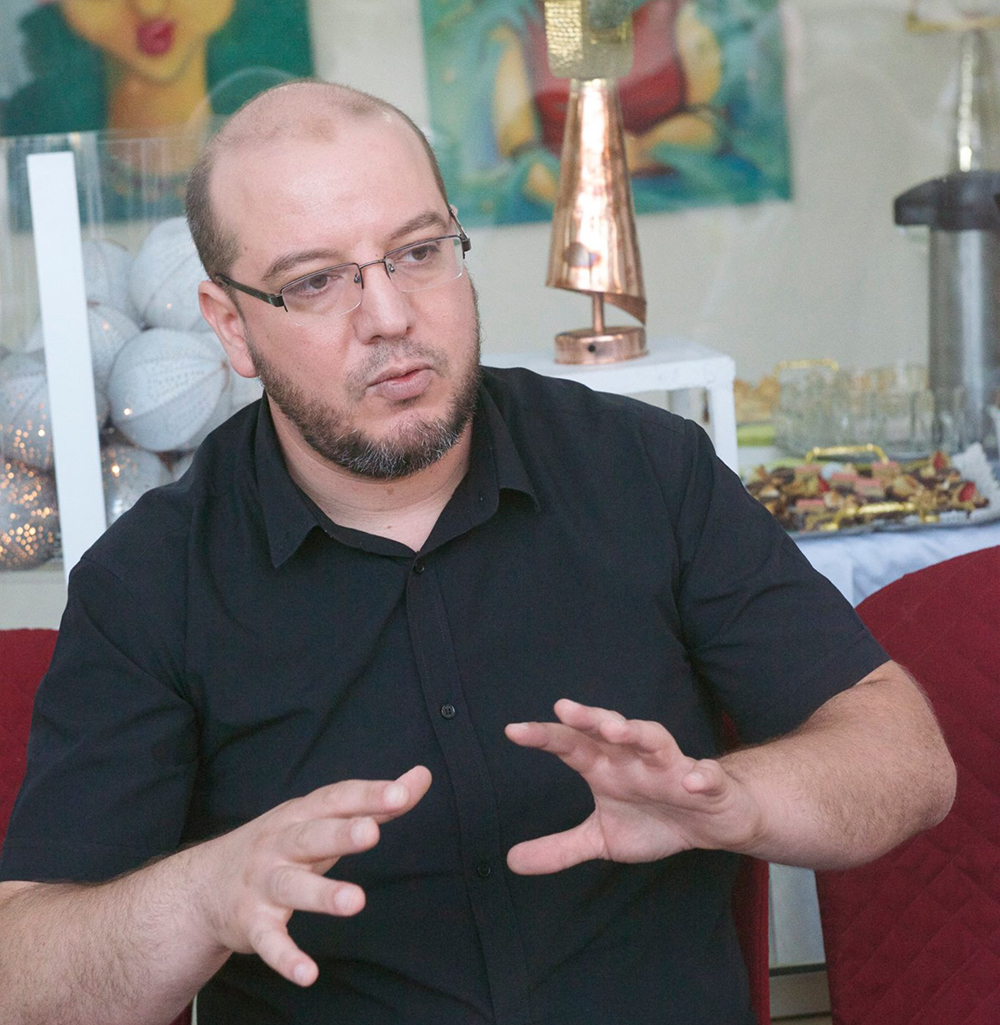
He buys murex fillets from a nearby fisherman, removes the glands, grinds the shells, then ferments and cooks them. He follows meticulous procedures and succeeds in creating a little amount of purple powder. The magnitude of the operation is enormous—54 kilograms of murex shells are needed to produce only one gram of Tyrian purple. Production of dye is economically feasible given the volume needed. But the purple powder he painstakingly creates now sells for a hefty price of around $2,500 per gram. Its allure stems from both its rarity and authenticity, which connects the present with a time of wealth and grandeur.





